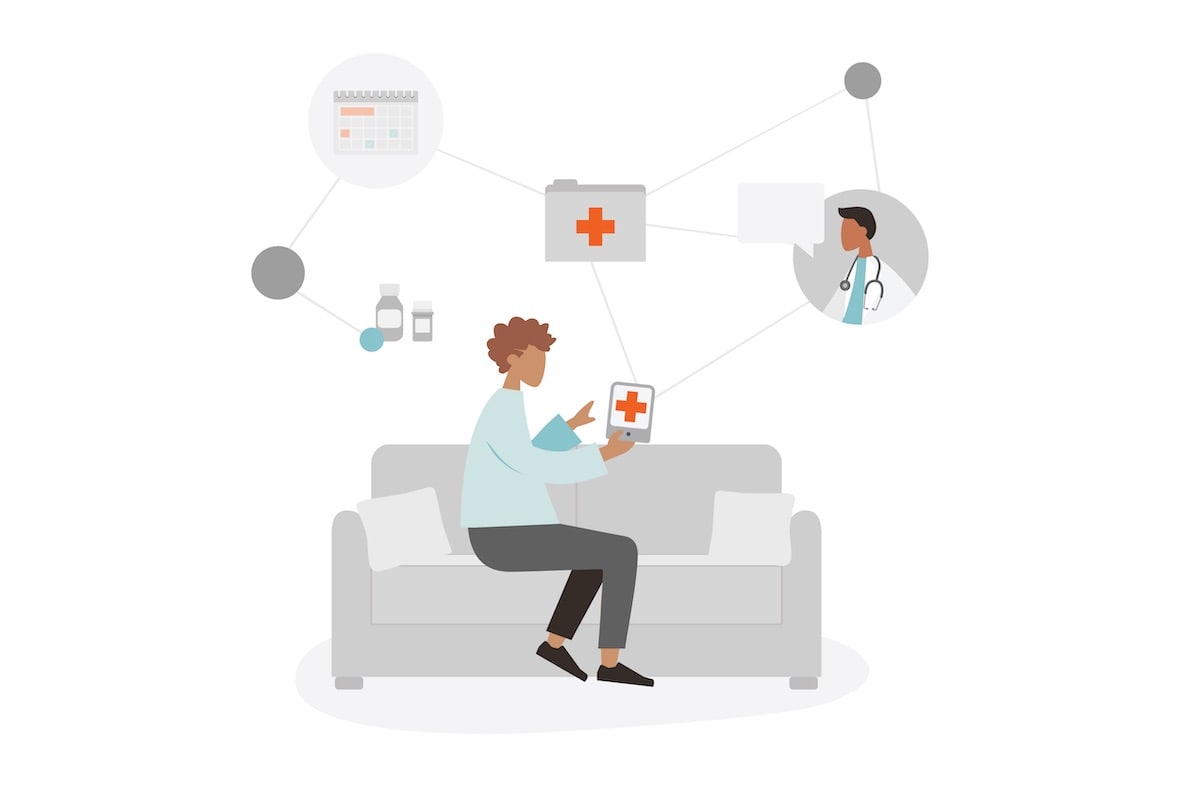The healthcare digital front door enables a truly personalised healthcare experience for individuals and helps to simplify a consumer’s access to what can often be overwhelming, disjointed, and complicated health systems. It is a comprehensive technology solution that empowers citizens and enables them to interact with the health system at a time and place convenient to them.
Studies have shown that patients who have access to and engage with patient engagement technologies see measurable improvements in the management and outcomes of their chronic conditions. A healthcare digital front door takes this many steps further, by empowering individuals with access to a suite of enhanced tools and technologies, available from their first point of contact and throughout every subsequent interaction they have with the health system.
But how can organisations approach implementing a digital front door to make the most of the investment?
A strategy with a vision to support consumers
When considering implementing a digital front door, organisations should take a strategic approach with a vision for a complete ecosystem that supports consumers across all their healthcare interactions. This means everything from a symptom checker to triage patients to the right advice or care, either virtually or in person, single access to complete medical records, online prescription ordering and medication history, educational material, payment options, and so on.
Because a digital front door solution spans such a wide variety of functions, it is best regarded as a strategic project with several individual initiatives. Each initiative should provide value to the organisation, be aligned with strategic priorities and, most importantly, provide better access to the health system to empower consumers.
The true value of a healthcare digital front door will be realised when implemented at a population level, leveraging all the data, resources, and tools from across the entire health system. This approach will ensure consumers can conveniently access everything they need to manage their own healthcare journey from a centralised location and will offer health systems unprecedented efficiency.
Integrating existing technology
Many patients have already adopted the use of patient portals, telehealth technology and other digital health solutions to help manage their healthcare, and the COVID-19 pandemic has accelerated the need for organisations to adopt virtual healthcare services to keep people out of hospitals, reserving valuable resources for those who need them most.
A digital front door strategy should allow for integration with these existing patient engagement technologies and should take a best-of-breed approach that does not demand replacement of the tools that already exist.
Integrating a suite of tools into a digital front door solution allows organisations and patients to use systems already in place and in use, such as existing e-referral, virtual care and appointment booking systems. Taking an incremental approach to implementation, leveraging these existing successes, and extending and adding services will provide a holistic digital front door that is adopted and used more quickly.
The time to act is now
The recent rapid adoption of virtual and online care tools presents health and service providers with an opportunity to fundamentally transform the way people across cities, regions and even entire nations experience and interact with healthcare. Something that has been a long time coming for an industry that has historically lagged in terms of patient engagement and experience, particularly in the digital space.
Now is the best time to plan a digital front door strategy. Leveraging existing technologies, integrating them, and leading with a cohesive strategy will put healthcare organisations firmly in tune with engaging and empowering consumers now and in the future, and finally deliver the healthcare we all desire.
Read more about Digital health’s next big transformation: The shift to healthcare, anywhere in our latest whitepaper.

